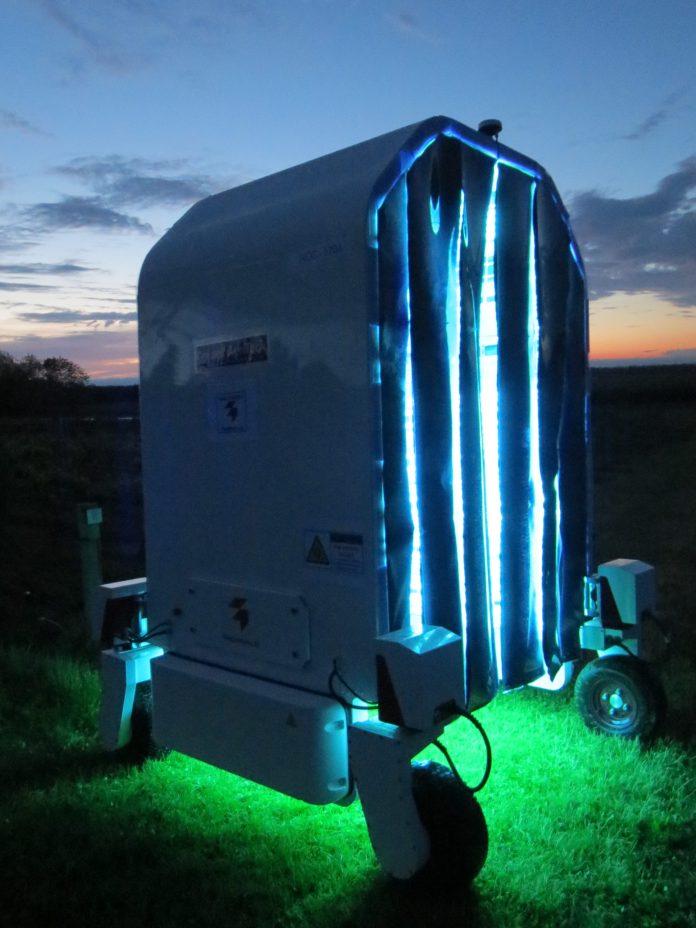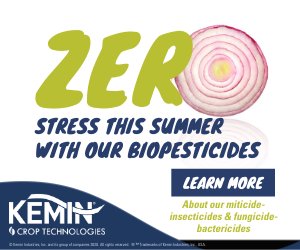
Ultraviolet (UV) light lamps attached to unmanned vehicles are being used to fight powdery mildew infections on research vineyards on the East Coast and may hold promise for West Coast vineyards as well.
Researchers at Cornell AgriTech in Geneva, NY, in collaboration with colleagues at Rensselaer Polytechnic Institute’s Lighting Research Center (RPI-LRC), the University of Florida, and the National Agricultural University of Norway (NMBU), have been working with a Norwegian manufacturer (SAGA Robotics) to develop the autonomous robots for commercial use.
Everywhere grapes are grown, powdery mildew poses a threat to the crop. This fungal disease is especially significant due to cost of control. According to the Robert Mondavi Institute Center for Wine Economics at UC Davis, powdery mildew management accounts for 74 percent of total pesticide applications by California grape growers and 17 percent of total pesticide use in California agriculture (by weight of active ingredient.)
David Gadoury, senior research associate in the Department of Plant Pathology at Cornell AgriTech, who is leading the project, said in a phone interview that interest in this unique control is high in California.
The UV lights are the same germicidal lamps used in hospitals; the lights penetrate plant canopies to reach and suppress certain pathogens. Research in using UV light to kill the powdery mildew pathogens is not new, Gadoury said, but it has accelerated with the discovery that it is effective at night.
He explained that powdery mildews have co-evolved with the plants they attack over millions of years and often develop resistance to chemical treatments. Their evolution has also given them an Achilles heel: adaptation to natural cycles of light and dark. UV light damages DNA of many organisms, but they evolved developed biochemical defenses against this damage, using a repair process that requires the blue light component of sunlight.
“What makes it possible for us to use UV to control these plant pathogens is we apply it at night,” Gadoury said. “At night, the pathogens don’t receive blue light and the DNA repair mechanism isn’t working.”
In field trials, the light arrays are carried within a tunnel-shaped frame that can be adapted to different trellis systems. The robotic factor can be a labor-saving feature, but the lamp array could also be pulled by tractor.
Gadoury said the UV treatment requires four hours of darkness after application for maximum effectiveness. At a speed of 5 mph, a towable or robotic array could travel over 20 miles during the available nighttime, even during the shortest nights of summer in most viticulture areas. Extensive trials have been completed on Florida and California strawberries. Grape trials for suppression of both powdery and downy mildew are underway in New York, Washington, and Oregon, with California trials planned for 2021.
The research group includes assistant professors Katie Gold and Yu Jiang at Cornell AgriTech, Natalia Peres at the University of Florida, Mark Rea at Rensselaer Polytechnic Institute’s Lighting Research Center, and Arne Stensvand at Norway’s Institute of Bioeconomy.
The research is supported by grants from the USDA-SCRI, USDA-OREI, the Research Council of Norway and the New York Farm Viability Institute. Support also came from lighting companies OSRAM and the Asahi Glass Co.






















